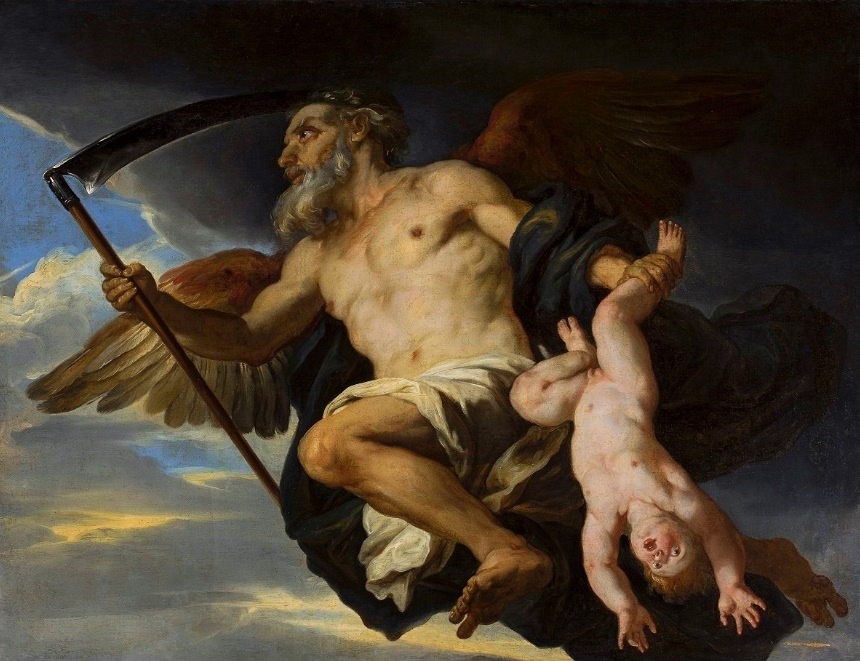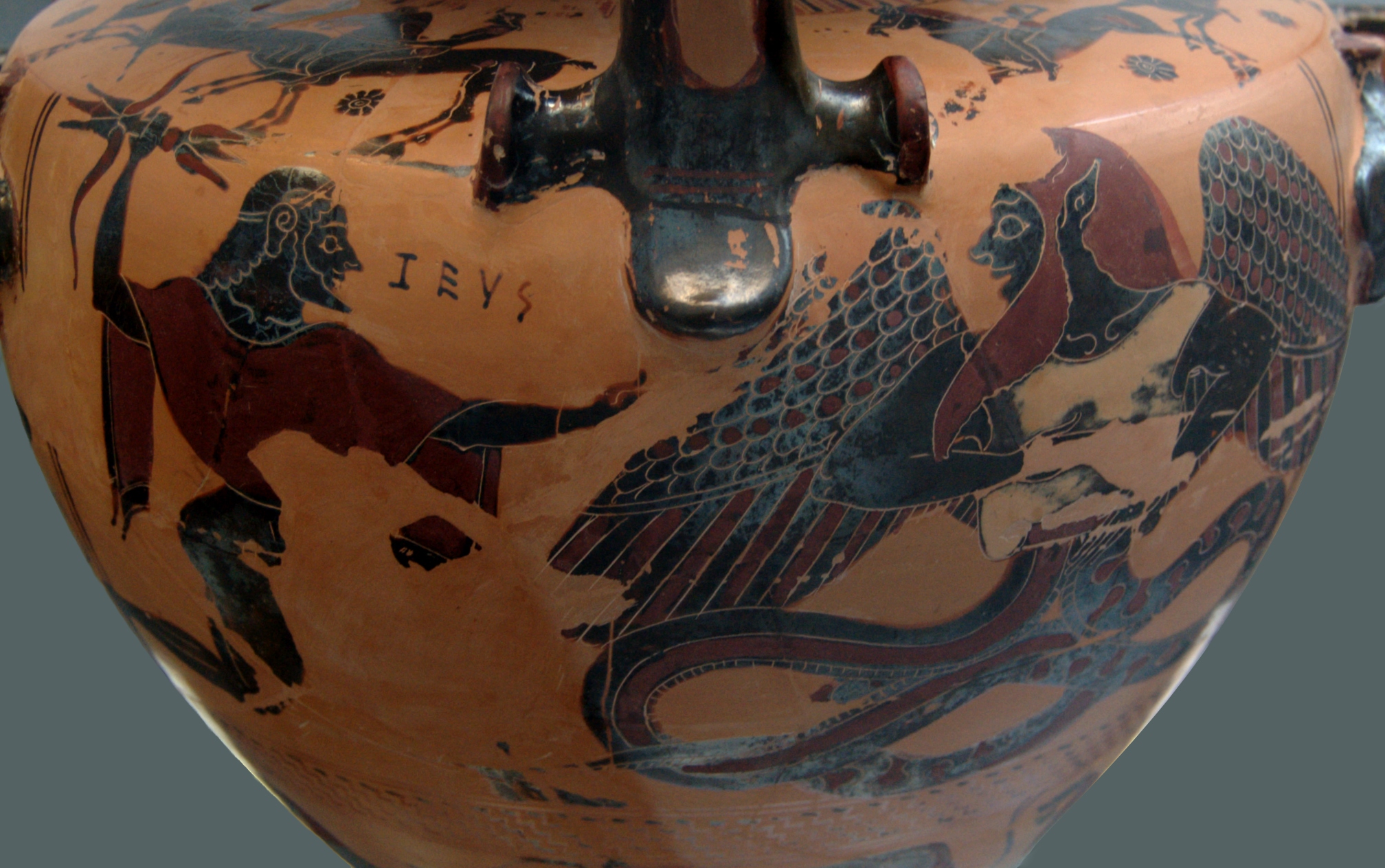|
Anatole (mythology)
In Greek mythology, Anatole () was the second Hora (Hour) who presided over the hour of dawn. She was also called Anatolia or Antolia (бЉИќљѕДќњќїќѓќЈ means вАШeasternвАЩ).Nonnus, 41.283 & 290 Family Anatolia was sister of the other eleven Hora: Auge (First Light), Musica (Hour of Music), Gymnastica (Hour of Exercise), Nymphe (Hour of Bath), Mesembria (Noon), Sponde (Libation), Elete (Hour of Prayer), Acte (Hour of Pleasure), Hesperis (Evening), Dysis (Sunset) and Arctus (Night Sky). Their father was either Helios (Sun) or Chronos (Time).Nonnus, 12.15 Mythology Antolia along with her sisters, Dysis, Mesembria and Arktos were the attendants of the goddess Harmonia (Harmony) within her halls in heaven. Like the rest of her siblings, she attended one of the four gates of the Winds Wind is the natural movement of atmosphere of Earth, air or other gases relative to a planetary surface, planet's surface. Winds occur on a range of scales, from thunderstorm flows lasti ... [...More Info...] [...Related Items...] OR: [Wikipedia] [Google] [Baidu] |
Greek Mythology
Greek mythology is the body of myths originally told by the Ancient Greece, ancient Greeks, and a genre of ancient Greek folklore, today absorbed alongside Roman mythology into the broader designation of classical mythology. These stories concern the ancient Greek religion's view of the Cosmogony, origin and Cosmology#Metaphysical cosmology, nature of the world; the lives and activities of List of Greek deities, deities, Greek hero cult, heroes, and List of Greek mythological creatures, mythological creatures; and the origins and significance of the ancient Greeks' cult (religious practice), cult and ritual practices. Modern scholars study the myths to shed light on the religious and political institutions of ancient Greece, and to better understand the nature of mythmaking itself. The Greek myths were initially propagated in an oral tradition, oral-poetic tradition most likely by Minoan civilization, Minoan and Mycenaean Greece, Mycenaean singers starting in the 18th century&n ... [...More Info...] [...Related Items...] OR: [Wikipedia] [Google] [Baidu] |
Chronos
Chronos (; ; , Modern Greek: ), also spelled Chronus, is a personification of time in Greek mythology, who is also discussed in pre-Socratic philosophy and later literature. Chronos is frequently confused with, or perhaps consciously identified with, the Titans, Titan, Cronus, in antiquity, due to the similarity in names. The identification became more widespread during the Renaissance, giving rise to the iconography of Father Time wielding the harvesting scythe. Greco-Roman mosaics depicted Chronos as a man turning the zodiac wheel. He is comparable to the Aion (deity), deity Aion as a symbol of cyclical time. He is usually portrayed as an old callous man with a thick grey beard, personifying the destructive and stifling aspects of time. Name During antiquity, Chronos was occasionally interpreted as Cronus. According to Plutarch, the Greeks believed that Cronus was an allegorical name for Chronos. Mythology In the Orphic tradition, the unaging Chronos was "engendered" by "e ... [...More Info...] [...Related Items...] OR: [Wikipedia] [Google] [Baidu] |
Time And Fate Goddesses
Time is the continuous progression of existence that occurs in an apparently irreversible succession from the past, through the present, and into the future. It is a component quantity of various measurements used to sequence events, to compare the duration of events (or the intervals between them), and to quantify rates of change of quantities in material reality or in the conscious experience. Time is often referred to as a fourth dimension, along with three spatial dimensions. Time is one of the seven fundamental physical quantities in both the International System of Units (SI) and International System of Quantities. The SI base unit of time is the second, which is defined by measuring the electronic transition frequency of caesium atoms. General relativity is the primary framework for understanding how spacetime works. Through advances in both theoretical and experimental investigations of spacetime, it has been shown that time can be distorted and dilated, particularl ... [...More Info...] [...Related Items...] OR: [Wikipedia] [Google] [Baidu] |
Dionysiaca
The ''Dionysiaca'' (, ''Dionysiak√°'') is an ancient Greek epic poem and the principal work of Nonnus. It is an epic in 48 books, the longest surviving poem from Greco-Roman antiquity at 20,426 lines, composed in Homeric dialect and dactylic hexameters, the main subject of which is the life of Dionysus, his expedition to India, and his triumphant return to the west. Composition The poem is thought to have been written in the 5th century AD. The suggestion that it is incomplete misses the significance of the birth of Dionysus' one son (Iacchus) in the final Book 48, quite apart from the fact that 48 is a key number as the number of books in the ''Iliad'' and ''Odyssey'' combined. The older view that Nonnus wrote this poem before conversion to Christianity and the writing of his other long poem, a verse paraphrase of Gospel of John, St John's Gospel, is now discredited, since a host of indications point to the latter being the earlier work and because it misses the eclecticism of l ... [...More Info...] [...Related Items...] OR: [Wikipedia] [Google] [Baidu] |
Charis (mythology)
Charis (; , or Kharis, "Grace"), is a goddess in Greek mythology. She is a member of the Charites () вАФ or Gratiae (Graces) in Roman mythology вАФ who are goddesses of charm, beauty, nature, creativity and fertility. While the term ''Charis'' can refer to a member of this group generically, the name Charis is also used for specific goddesses in surviving sources. Mythology Charis is the wife of Hephaestus, as described in Homer's ''Iliad'' (written ~8th century BCE),Homer, ''Iliad'18.382вАУ385/ref> as well as in the later ''Dialogues of the Gods'' by Lucian (2nd century CE)Lucian, ''Dialogues of the Gods''Hermes and Apollo (II)/ref> and the ''Dionysiaca'' by Nonnus (5th century CE).Nonnus, ''Dionysiaca'29.317/ref> In the ''Iliad'', Charis lives with Hephaestus in a bronze-wrought home on Mount Olympus, into which she welcomes Thetis so that the latter may ask for Hephaestus to forge armor for her son Achilles. This is not the only tradition of Hephaestus' spouse, however. In Hom ... [...More Info...] [...Related Items...] OR: [Wikipedia] [Google] [Baidu] |
Boreas (god)
Boreas (, , , , ; also , ) is the Greek god of the cold north wind, storms, and winter. Although he was normally taken as the north wind, the Roman writers Aulus Gellius and Pliny the Elder both took Boreas as a northeast wind, equivalent to the Roman god Aquilo or Septentrio. Boreas is depicted as being very strong, with a violent temper to match. He was frequently shown as a winged old man or sometimes as a young man with shaggy hair and beard, holding a conch shell and wearing a billowing cloak. Boreas's most known myth is his abduction of the Athenian princess Orithyia of Athens, Oreithyia. Description Boreas, like the rest of the wind gods, was said to be the son of Eos, the goddess of the dawn, by her husband Astraeus, a minor star-god. He is thus brother to the rest of the Anemoi (the wind gods), the five star-gods and the justice goddess Astraea. Boreas was closely associated with horses, storms, and winter. He was said to have fathered twelve colts, after taking th ... [...More Info...] [...Related Items...] OR: [Wikipedia] [Google] [Baidu] |
Notus
In Greek mythology and religion, Notus () is the god of the south wind and one of the Anemoi (wind-gods), sons of the dawn goddess Eos and the star-god Astraeus. A desiccating wind of heat, Notus was associated with the storms of late summer and early autumn, wetness, mist, and was seen as a rain-bringer. Unlike his two more notable brothers, Boreas (the god of the north wind) and Zephyrus (the god of the west wind), Notus has little to no unique mythology of his own. His Roman equivalent is the god Auster. Etymology The Greek noun refers both to the south cardinal direction and the south wind that blows from it. Its ultimate etymology remains unknown, although a pre-Greek origin seems to be the most likely origin. Family Notus, like most of the wind gods, the Anemoi was said to be the son of Eos, the goddess of the dawn, by her husband Astraeus, a minor god related to the stars. Thus, he is brother to the five star-gods and the justice goddess Astraea, and half-brother t ... [...More Info...] [...Related Items...] OR: [Wikipedia] [Google] [Baidu] |
Selene
In ancient Greek mythology and Ancient Greek religion, religion, Selene (; , meaning "Moon")''A GreekвАУEnglish Lexicon's.v. ѕГќµќїќЃќљќЈ is the goddess and personification of the Moon. Also known as Mene (), she is traditionally the daughter of the Titans Hyperion (Titan), Hyperion and Theia, and sister of the Solar deity, sun god Helios and the Dawn deities, dawn goddess Eos. She drives her moon chariot across the heavens. Several lovers are attributed to her in various myths, including Zeus, Pan (god), Pan, and the mortal Endymion (mythology), Endymion. In post-classical times, Selene was often identified with Artemis, much as her brother, Helios, was identified with Apollo. Selene and Artemis were also associated with Hecate and all three were regarded as lunar deity, moon and lunar goddesses, but only Selene was regarded as the personification of the Moon itself. Her equivalent in Roman religion and mythology is the goddess Luna (goddess), Luna. Etymology and origins ... [...More Info...] [...Related Items...] OR: [Wikipedia] [Google] [Baidu] |
Zephyrus
In Greek mythology and religion, Zephyrus () (), also spelled in English as Zephyr (), is the god and personification of the West wind, one of the several wind gods, the Anemoi. The son of Eos (the goddess of the dawn) and Astraeus, Zephyrus is the most gentle and favourable of the winds, associated with flowers, springtime and even procreation. In myths, he is presented as the tender breeze, known for his unrequited love for the Spartan prince Hyacinthus. Alongside Boreas, the two are the most prominent wind gods with relatively limited roles in recorded mythology. Zephyrus, similarly to his brothers, received a cult during ancient times although his worship was minor compared to the Twelve Olympians. Still, traces of it are found in Classical Athens and surrounding regions and city-states, where it was usually joint with the cults of the other wind gods. His equivalent in Roman mythology is the god Favonius. Etymology The ancient Greek noun is the word for the wind that ... [...More Info...] [...Related Items...] OR: [Wikipedia] [Google] [Baidu] |
Euros
The euro (currency symbol, symbol: euro sign, вВђ; ISO 4217, currency code: EUR) is the official currency of 20 of the Member state of the European Union, member states of the European Union. This group of states is officially known as the euro area or, more commonly, the eurozone. The euro is divided into 100 1 euro cent coin, euro cents. The currency is also used officially by the institutions of the European Union, by International status and usage of the euro, four European microstates that are not EU members, the British Overseas Territory of Akrotiri and Dhekelia, as well as unilaterally by Montenegro and Kosovo. Outside Europe, a number of special territories of EU members also use the euro as their currency. The euro is used by 350 million people in Europe and additionally, over 200 million people worldwide use currencies pegged to the euro. It is the second-largest reserve currency as well as the second-most traded currency in the world after the United Sta ... [...More Info...] [...Related Items...] OR: [Wikipedia] [Google] [Baidu] |
Nymph
A nymph (; ; sometimes spelled nymphe) is a minor female nature deity in ancient Greek folklore. Distinct from other Greek goddesses, nymphs are generally regarded as personifications of nature; they are typically tied to a specific place, landform, or tree, and are usually depicted as Virginity, maidens. Because of their association with springs, they were often seen as having healing properties; other divine powers of the nymphs included divination and shapeshifting. In spite of their divine nature, they were not immortality, immortal. Nymphs are divided into various Nymph#List, broad subgroups based on their habitat, such as the Meliae (ash tree nymphs), the Dryads (oak tree nymphs), the Alseids (Grove (nature), grove nymphs), the Naiads (Spring (hydrology), spring nymphs), the Nereids (sea nymphs), the Oceanids (ocean nymphs), and the Oreads (mountain nymphs). Other nymphs included the Hesperides (evening nymphs), the Hyades (mythology), Hyades (rain nymphs), and the Pleiade ... [...More Info...] [...Related Items...] OR: [Wikipedia] [Google] [Baidu] |









